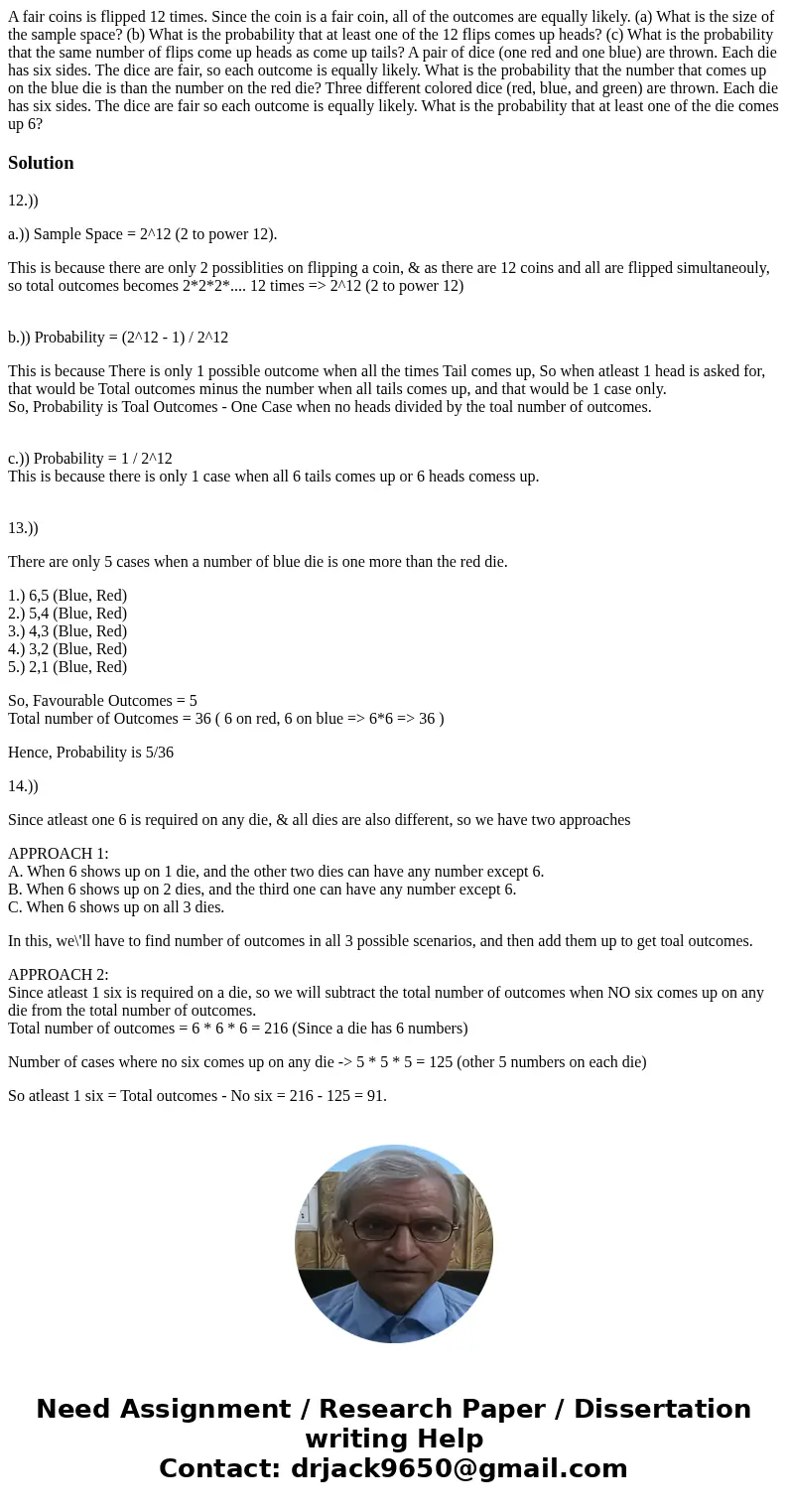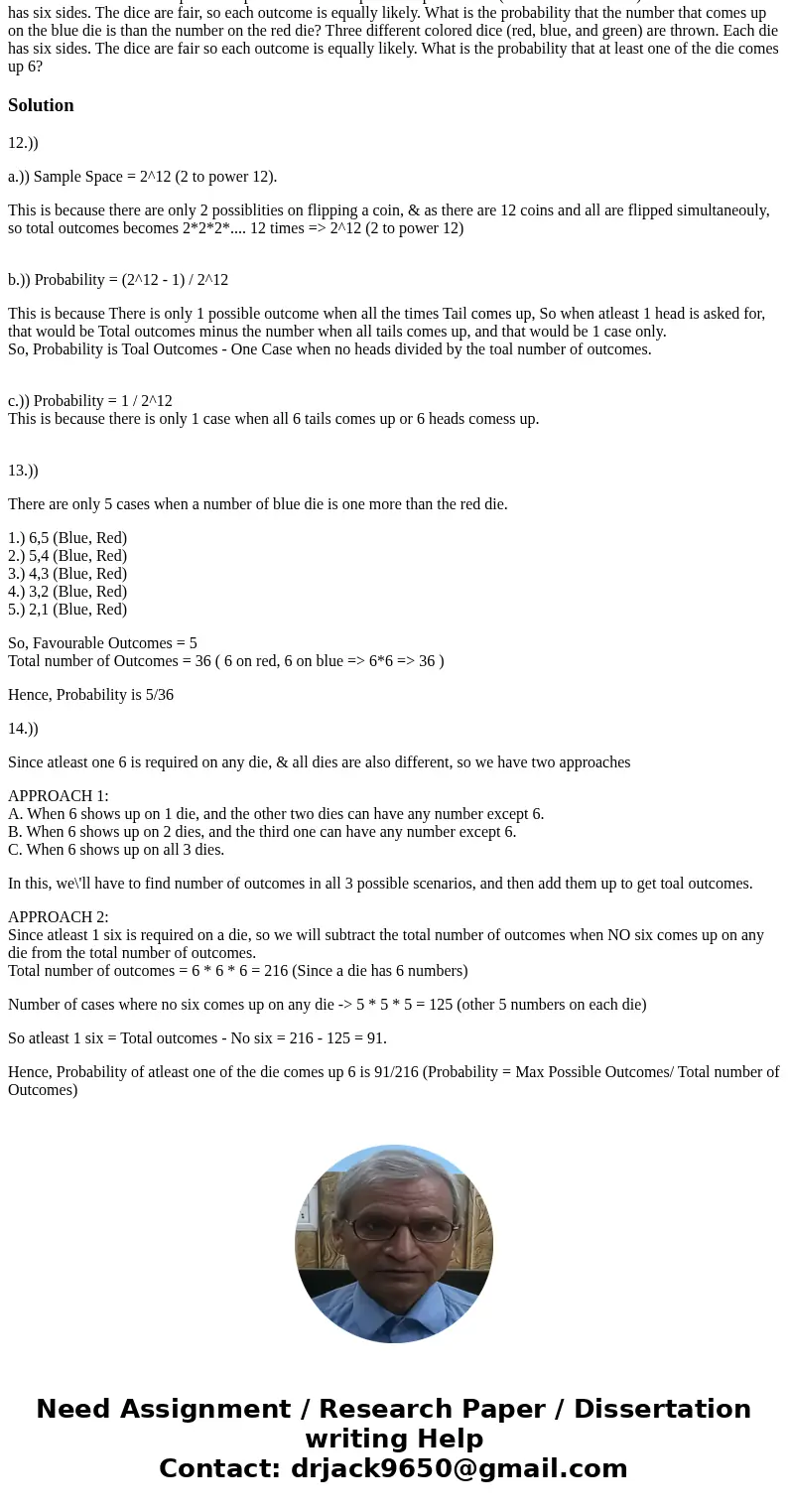A fair coins is flipped 12 times Since the coin is a fair co
Solution
12.))
a.)) Sample Space = 2^12 (2 to power 12).
This is because there are only 2 possiblities on flipping a coin, & as there are 12 coins and all are flipped simultaneouly, so total outcomes becomes 2*2*2*.... 12 times => 2^12 (2 to power 12)
b.)) Probability = (2^12 - 1) / 2^12
This is because There is only 1 possible outcome when all the times Tail comes up, So when atleast 1 head is asked for, that would be Total outcomes minus the number when all tails comes up, and that would be 1 case only.
So, Probability is Toal Outcomes - One Case when no heads divided by the toal number of outcomes.
c.)) Probability = 1 / 2^12
This is because there is only 1 case when all 6 tails comes up or 6 heads comess up.
13.))
There are only 5 cases when a number of blue die is one more than the red die.
1.) 6,5 (Blue, Red)
2.) 5,4 (Blue, Red)
3.) 4,3 (Blue, Red)
4.) 3,2 (Blue, Red)
5.) 2,1 (Blue, Red)
So, Favourable Outcomes = 5
Total number of Outcomes = 36 ( 6 on red, 6 on blue => 6*6 => 36 )
Hence, Probability is 5/36
14.))
Since atleast one 6 is required on any die, & all dies are also different, so we have two approaches
APPROACH 1:
A. When 6 shows up on 1 die, and the other two dies can have any number except 6.
B. When 6 shows up on 2 dies, and the third one can have any number except 6.
C. When 6 shows up on all 3 dies.
In this, we\'ll have to find number of outcomes in all 3 possible scenarios, and then add them up to get toal outcomes.
APPROACH 2:
Since atleast 1 six is required on a die, so we will subtract the total number of outcomes when NO six comes up on any die from the total number of outcomes.
Total number of outcomes = 6 * 6 * 6 = 216 (Since a die has 6 numbers)
Number of cases where no six comes up on any die -> 5 * 5 * 5 = 125 (other 5 numbers on each die)
So atleast 1 six = Total outcomes - No six = 216 - 125 = 91.
Hence, Probability of atleast one of the die comes up 6 is 91/216 (Probability = Max Possible Outcomes/ Total number of Outcomes)


 Homework Sourse
Homework Sourse